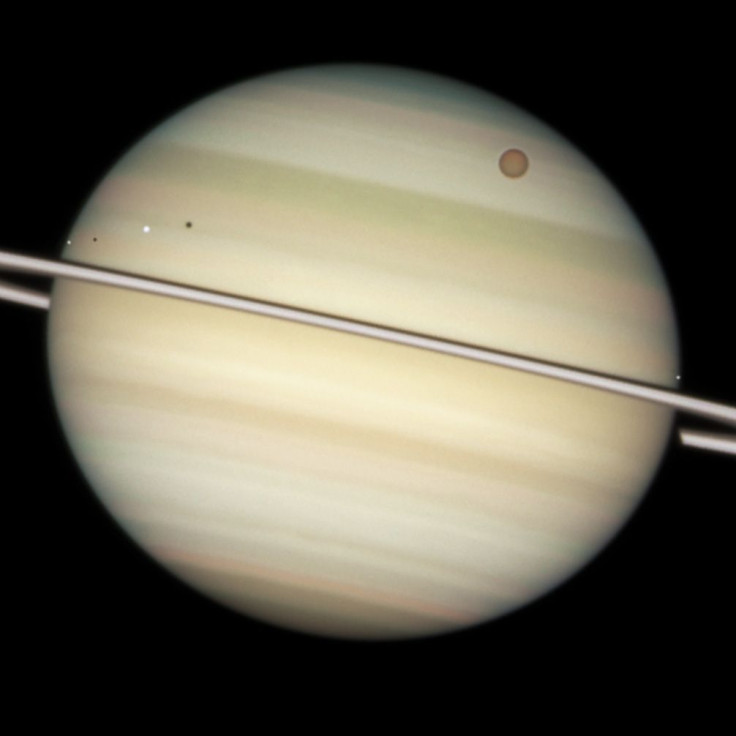Saturn Opposition 2015 Live Stream: How To See The Ringed Planet At Its Closest Approach To Earth

Saturn reaches opposition on Friday. It's not quite Mercury in retrograde -- which is a thing in astrology but not in astronomy -- but the ringed planet will be at its closest point to Earth beginning around sunset. It reaches its highest point in the night sky around 1 a.m. EDT in the United States. Seeing Saturn at its closest and brightest is easy enough with a telescope, but Slooh will also provide a Saturn opposition live stream beginning at 9 p.m. EDT (6 p.m. PDT).
As astronomers describe it, seeing Saturn for the first time feels like someone is pulling a prank as the planet looks like no other. It's the color of a latte, according to Sky and Telescope, and the rings appear bright white. Saturn will be just 833 million miles from Earth Friday night and into Saturday morning. Nothing strange will happen, as neither communication or technology will be affected and there will be no shift in Earth's gravity or tides. Saturn will be at its closest point to Earth and opposite the sun, which makes for ideal viewing conditions. "Seeing Saturn for the first time is a very special moment for any astronomer," Slooh astronomer Will Gater said in a statement.
Observing Saturn is pretty easy, but it requires a small telescope. In the U.S., the planet rises around 8:13 p.m. EDT. Saturn can be found between the constellations of Libra and Scorpius. Stargazers can use Antares, the brightest star in constellation Scorpius, and the constellation's crown of three stars as a guide to find Saturn. Earth Sky has a good map for observing the ringed planet. While you're looking up, you can also observe Jupiter and Venus. Three very bright stars -- Castor, Pollux and Regulus -- are also visible.
If you're up to the challenge, there are a few things to look for when observing Saturn. There's the large gap in Saturn's ring, known as Cassini's Division, and you can also try to identify Saturn's A, B and C rings, notes Sky and Telescope. There are also plenty of moons -- with Titan, Rhea, Iapetus, Dione and Tethys being the easiest to find -- visible to anyone with a 6-inch telescope.
If you don't have a telescope, find your local observatory or astronomy club to find out if there will be an observation event. The Amateur Astronomers Association of New York will have observation events at Lincoln Center, Floyd Bennett Field and Carl Schurz Park on Friday and at the High Line and Lincoln Center on Saturday.
Slooh's Saturn opposition live stream will feature close-up views of the planet and its moons beginning at 9 p.m. EDT on Friday, and Gater will be joined by Dr. Jonathan Lunine, a planetary scientist from Cornell University. The broadcast will include a discussion on the Cassini mission and the search for life on Saturn's moon Enceladus.
© Copyright IBTimes 2025. All rights reserved.






















